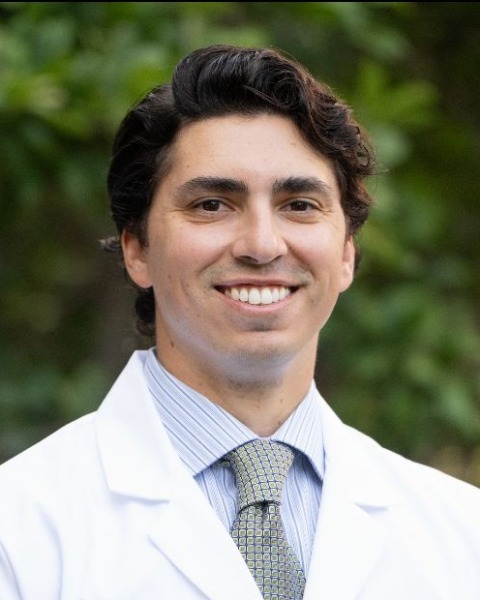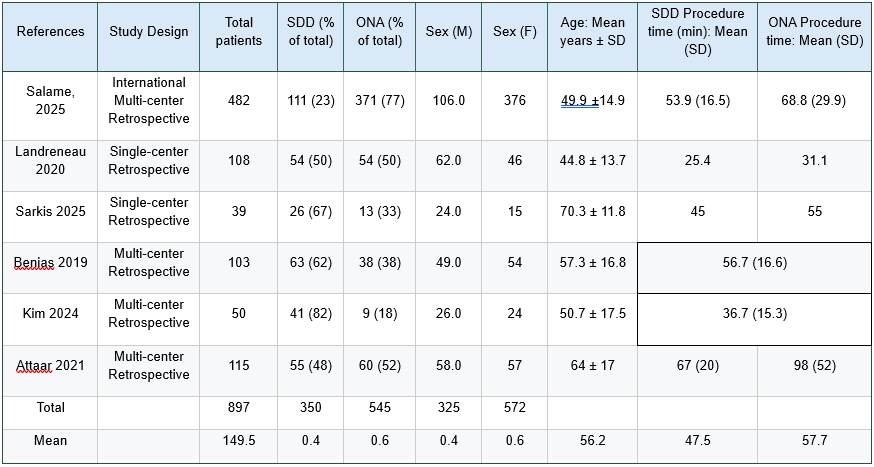Monday Poster Session
Category: Interventional Endoscopy
P3519 - Clinical Outcomes of Same Day Discharge vs Overnight Admission Following Endoscopic Myotomy: A Systematic Review and Meta-Analysis
Monday, October 27, 2025
10:30 AM - 4:00 PM PDT
Location: Exhibit Hall

Benjamin Twery, MD (he/him/his)
University of Maryland School of Medicine
Baltimore, MD
Presenting Author(s)
Benjamin Twery, MD1, Andrew Canakis, DO2, Azizullah Beran, MD3, Nicol Tugarinov, MD4, Sydney Greenberg, MD2, Ian Grimm, MD2, Daniel Kroch, MD2
1University of Maryland School of Medicine, Baltimore, MD; 2University of North Carolina at Chapel Hill School of Medicine, Chapel Hill, NC; 3Indiana University School of Medicine, Indianapolis, IN; 4Perelman School of Medicine at the University of Pennsylvania, Philadelphia, PA
Introduction: Endoscopic myotomy is a minimally invasive endoscopic procedure that is used primarily to manage achalasia but has expanded indications to include other foregut motility disorders such as Zenker’s diverticulum and gastroparesis. Typically, patients undergoing endoscopic myotomy have been admitted for overnight hospital monitoring for post-procedural adverse events. However, there is growing interest in exploring same-day discharge (SDD) protocols. In this context, we conducted a systematic review and meta-analysis to assess the safety and efficacy of SDD versus overnight admission (ONA) following per oral endoscopic myotomy procedures for therapy of esophageal motility disorders (POEM), Zenker’s diverticulum, and gastroparesis.
Methods: Multiple databases were searched for studies looking at SDD in endoscopic myotomy procedures from inception until March 2025. The primary outcomes were 30-day hospital readmission and 30-day emergency department visit rates. Secondary outcomes included adverse events (AE).
Results: Six studies met inclusion criteria (n=897 patients). There was no significant difference in 30-day hospital readmission (RR 0.69, 95% CI 0.29-1.62, I2 =51%, p=0.39) or 30-day emergency department visit rates (RR 0.89, 95% CI 0.36-1.89, I2=0%, p=0.64). Subgroup analysis of 30-day hospital readmission rates by POEM type showed consistent findings for esophageal POEM (RR 0.49, 95% CI 0.19-1.25, I² = 0%, p=0.14) and gastric POEM (RR 0.88, 95% CI 0.20-3.85, I² = 77%, p=0.86), with no significant subgroup differences (p=0.51, I² = 0%). There were significantly fewer adverse events in the SDD group (RR 0.16, 95% CI 0.05-0.54, I2=0%, p=0.003).
Discussion: Our meta-analysis indicates that SDD following endoscopic myotomy is feasible and safe. In this systematic review and meta-analysis involving 897 patients undergoing endoscopic myotomy procedures we found that there were no differences in 30-day hospital readmission rates between SDD vs ONA. These findings align with several previous studies assessing the practicality and safety of implementing SDD protocols in endoscopic myotomy procedures and the AGA’s recent expert consensus on the topic. Our study sheds light on evolving practice patterns that will continue to shape the outpatient management of SDD for POEM procedures. Further comparative multicenter studies are needed to assess patient selection factors and standardize SDD protocols.

Figure: Table 1: Study Characteristics and Outcomes

Figure: Figure 1: Pooled rate of 30-day hospital readmissions
Disclosures:
Benjamin Twery indicated no relevant financial relationships.
Andrew Canakis indicated no relevant financial relationships.
Azizullah Beran indicated no relevant financial relationships.
Nicol Tugarinov indicated no relevant financial relationships.
Sydney Greenberg indicated no relevant financial relationships.
Ian Grimm indicated no relevant financial relationships.
Daniel Kroch indicated no relevant financial relationships.
Benjamin Twery, MD1, Andrew Canakis, DO2, Azizullah Beran, MD3, Nicol Tugarinov, MD4, Sydney Greenberg, MD2, Ian Grimm, MD2, Daniel Kroch, MD2. P3519 - Clinical Outcomes of Same Day Discharge vs Overnight Admission Following Endoscopic Myotomy: A Systematic Review and Meta-Analysis, ACG 2025 Annual Scientific Meeting Abstracts. Phoenix, AZ: American College of Gastroenterology.
1University of Maryland School of Medicine, Baltimore, MD; 2University of North Carolina at Chapel Hill School of Medicine, Chapel Hill, NC; 3Indiana University School of Medicine, Indianapolis, IN; 4Perelman School of Medicine at the University of Pennsylvania, Philadelphia, PA
Introduction: Endoscopic myotomy is a minimally invasive endoscopic procedure that is used primarily to manage achalasia but has expanded indications to include other foregut motility disorders such as Zenker’s diverticulum and gastroparesis. Typically, patients undergoing endoscopic myotomy have been admitted for overnight hospital monitoring for post-procedural adverse events. However, there is growing interest in exploring same-day discharge (SDD) protocols. In this context, we conducted a systematic review and meta-analysis to assess the safety and efficacy of SDD versus overnight admission (ONA) following per oral endoscopic myotomy procedures for therapy of esophageal motility disorders (POEM), Zenker’s diverticulum, and gastroparesis.
Methods: Multiple databases were searched for studies looking at SDD in endoscopic myotomy procedures from inception until March 2025. The primary outcomes were 30-day hospital readmission and 30-day emergency department visit rates. Secondary outcomes included adverse events (AE).
Results: Six studies met inclusion criteria (n=897 patients). There was no significant difference in 30-day hospital readmission (RR 0.69, 95% CI 0.29-1.62, I2 =51%, p=0.39) or 30-day emergency department visit rates (RR 0.89, 95% CI 0.36-1.89, I2=0%, p=0.64). Subgroup analysis of 30-day hospital readmission rates by POEM type showed consistent findings for esophageal POEM (RR 0.49, 95% CI 0.19-1.25, I² = 0%, p=0.14) and gastric POEM (RR 0.88, 95% CI 0.20-3.85, I² = 77%, p=0.86), with no significant subgroup differences (p=0.51, I² = 0%). There were significantly fewer adverse events in the SDD group (RR 0.16, 95% CI 0.05-0.54, I2=0%, p=0.003).
Discussion: Our meta-analysis indicates that SDD following endoscopic myotomy is feasible and safe. In this systematic review and meta-analysis involving 897 patients undergoing endoscopic myotomy procedures we found that there were no differences in 30-day hospital readmission rates between SDD vs ONA. These findings align with several previous studies assessing the practicality and safety of implementing SDD protocols in endoscopic myotomy procedures and the AGA’s recent expert consensus on the topic. Our study sheds light on evolving practice patterns that will continue to shape the outpatient management of SDD for POEM procedures. Further comparative multicenter studies are needed to assess patient selection factors and standardize SDD protocols.

Figure: Table 1: Study Characteristics and Outcomes

Figure: Figure 1: Pooled rate of 30-day hospital readmissions
Disclosures:
Benjamin Twery indicated no relevant financial relationships.
Andrew Canakis indicated no relevant financial relationships.
Azizullah Beran indicated no relevant financial relationships.
Nicol Tugarinov indicated no relevant financial relationships.
Sydney Greenberg indicated no relevant financial relationships.
Ian Grimm indicated no relevant financial relationships.
Daniel Kroch indicated no relevant financial relationships.
Benjamin Twery, MD1, Andrew Canakis, DO2, Azizullah Beran, MD3, Nicol Tugarinov, MD4, Sydney Greenberg, MD2, Ian Grimm, MD2, Daniel Kroch, MD2. P3519 - Clinical Outcomes of Same Day Discharge vs Overnight Admission Following Endoscopic Myotomy: A Systematic Review and Meta-Analysis, ACG 2025 Annual Scientific Meeting Abstracts. Phoenix, AZ: American College of Gastroenterology.

